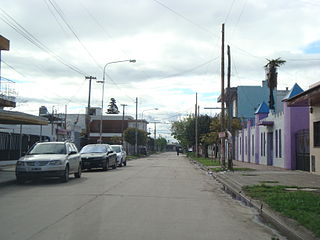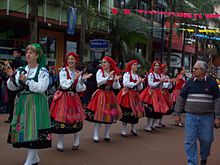
Buenos Aires, officially the Buenos Aires Province, is the largest and most populous Argentine province. It takes its name from the city of Buenos Aires, the capital of the country, which used to be part of the province and the province's capital until it was federalized in 1880. Since then, in spite of bearing the same name, the province does not include Buenos Aires city, though it does include all other parts of the Greater Buenos Aires metropolitan area. The capital of the province is the city of La Plata, founded in 1882.

Greater Buenos Aires, also known as the Buenos Aires Metropolitan Area, refers to the urban agglomeration comprising the Autonomous City of Buenos Aires and the adjacent 24 partidos (districts) in the Province of Buenos Aires. Thus, it does not constitute a single administrative unit. The conurbation spreads south, west and north of Buenos Aires city. To the east, the River Plate serves as a natural boundary.

A partido is the second-level administrative subdivision only in the province of Buenos Aires, Argentina. They are formally considered to be a single administrative unit, usually contain one or more population centers, and are divided into localidades. The subdivision in partidos in Buenos Aires Province is distinct from all other provinces of Argentina, which call their second-level subdivisions departamento and are further subdivided into distinct municipalities.

The following is an alphabetical list of topics related to the Argentina.
Beccar is a town located 17 km (11 mi) north of the Buenos Aires metropolitan area in the Buenos Aires Province, Argentina. It is part of the partido of San Isidro in Gran Buenos Aires. It is situated close to the historic town of San Isidro and it is characterized by tree lined streets and plazas, red tiled roofed style chalets, high-rise apartment buildings that line the Avenida Centenario zone and by being close to the coast of Rio de la Plata river and yacht clubs. Nearby there is a large shanty town (Villa La Cava). Beccar is served by a 10-minute walk to scenic Tren de la Costa light rail line at Punta Chica station and the commuter railway at Beccar station with easy access to Buenos Aires city centre and the weekend retreat of the Village of Tigre.

La Matanza is a partido located in the urban agglomeration of Greater Buenos Aires, Buenos Aires Province, Argentina.

Merlo is a partido of Buenos Aires Province, Argentina. It is located in Greater Buenos Aires, Argentina, west of the city of Buenos Aires. Its capital is the city of Merlo.

Ruta Nacional 3 is an Argentine highway, stretching from the eastern side of the country in Buenos Aires, crossing the provinces of Buenos Aires, Río Negro, Chubut Province, Santa Cruz and Tierra del Fuego. Since its start at Avenida General Paz (A001) until the end, on the bridge over Lapataia River, it measures 3,045 kilometres (1,892 mi).
Club Almirante Brown is an Argentine sports club headquartered in the San Justo district of La Matanza Partido, in Greater Buenos Aires.
Isidro Casanova is a city in La Matanza Partido, Greater Buenos Aires, Argentina. It borders the towns of Villa Luzuriaga, San Justo, Ciudad Evita, Rafael Castillo, Laferrere, and Ezeiza.

Pontevedra is a city located in Merlo Partido, Buenos Aires Province, Argentina. The town was named after the homonymous city of Pontevedra, Spain.

González Catán is a city located in La Matanza Partido, Buenos Aires Province, Argentina. The city is the second-largest by area in the county (52 km²), and the second most-populous. The city is located near the southwestern end of the Greater Buenos Aires metropolitan area, 20 miles (32 km) from Buenos Aires along Route 3.
Gregorio de Laferrère is a city in the La Matanza Partido of Buenos Aires Province.
Events in the year 1864 in Argentina.
Events in the year 1867 in Argentina.

Bolivian Argentines are Argentine citizens of Bolivian descent or Bolivia-born people who immigrated to Argentina. In recent decades, Bolivia has become one of the main sources of immigration in Argentina, making Bolivians one of the largest Hispanic American immigrant groups in Argentina, along with Paraguayans, Peruvians and Venezuelans.

Verónica María Magario is an Argentine politician, currently serving as Vice Governor of Buenos Aires Province, alongside Governor Axel Kicillof, since 10 December 2019. From 2015 to 2019, Magario was intendente (mayor) of La Matanza, the most populous partido in the Greater Buenos Aires metropolitan area.

Mónica Leticia Schlotthauer is an Argentine railway worker and union leader who served as a member of the Argentine Chamber of Deputies elected in Buenos Aires Province on two occasions, from April to December 2019, and later from June to December 2021. Schlotthauer is a member of Socialist Left, a Trotskyist political party organized within the Workers' Left Front.














